Rene Descartes (1596-1650 AD) had observed, “If you begin with certainties, you will end up in doubts but if you are content to begin with doubts, you will end up in certainties”. The Americans were unconsciously following Descartes. Their starting point was not an aim or an identified technology but a search for what technology – at that point unidentified – would enable the USAF to survive and dominate hostile airspace. Having identified Stealth as a possible solution, they then tried to establish a minimum level of stealth required to survive. The technological difficulties were respected as only engineers and practical men can and no impossible goals were set.
Forty years ago the Americans developed a very serviceable stealth aircraft, the world’s first, in a remarkably short time and at a very modest cost…
Forty years ago the Americans developed a very serviceable stealth aircraft, the world’s first, in a remarkably short time and at a very modest cost. As India discusses her own Advanced Medium Combat Aircraft (AMCA) programme, the honesty, simplicity and common sense that guided the American programme is worthy of review. The Americans, geographically isolated, have always had a unique requirement of “air superiority over hostile airspace”. The air war over Vietnam War showed that this requirement could no longer be met by the traditional US combination of “superior” aircraft and ECM. The Vietnam War was a static defensive action. The Ramadan/Yom Kippur War showed that the same carefully coordinated defence system using low technology mobile AAA, tracked SAMs and aircraft could also be used for offensive operations. The American requirement of air superiority over hostile airspace was clearly under threat.
The Americans, despite considerable skepticism, identified stealth as a possible solution to the challenge. Stealth meant reduction of Radar, Aural, IR and visual signatures. Since the threat came mainly from radar and radar guided weapons, the Reduction of Radar Cross Section (RRCS) was given primacy. The details of the American programme to develop stealth technology is of interest because an urgently needed technology was developed to meet an identified requirement at low cost to a tight time scale – a management skill that will be of interest to Indian Aerospace if the AMCA programme is pursued.
The Stealth Development Programme
Step 1: Establishing the Basics
The bare bones of the American Stealth development programme are as given below. The focus on short steps, strict timelines, low costs and the verification and securing of each technology step before taking the next steps is inescapable.
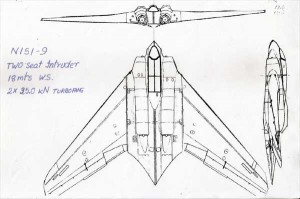 Within a few months of the Yom Kippur/Ramadan War, as soon as the Israeli loss patterns had been analysed, Ken Parko of DARPA requested submissions from the top five American fighter manufacturing companies. The DARPA focused on just two parameters.
Within a few months of the Yom Kippur/Ramadan War, as soon as the Israeli loss patterns had been analysed, Ken Parko of DARPA requested submissions from the top five American fighter manufacturing companies. The DARPA focused on just two parameters.
- What were the signatures thresholds for an aircraft to be essentially undetectable at an operationally useful radar range?
- Did the company have the capability to design and produce an aircraft with the necessary low signatures?
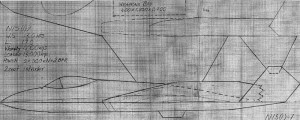 The approach at this stage was exploratory. Was stealth feasible? The eventual winner, Lockheed, was not even contacted because Lockheed had not produced a fighter since the Starfighter of the 1960s.The emphasis on experience because of the urgency of the programme is to be noted. Of the five companies contacted, two declined and one proposed continued emphasis on sophisticated platforms and advanced ECM. Two companies – Northrop and MacDonnell Douglas showed a grasp of the problem. In the closing months of 1974, i.e. twelve months after Yom Kippur, the two companies were funded $100,000 each to conduct further studies. For convenience of Indian readers, the dollar values have been converted to rupees at the then exchange rates and the local Purchasing Power Parity (PPP) factor of about 3.5 is being also given because the cost of an Indian engineering manhour is much less than US. Thus we have $100,000/ 12 lakh/ 3.5 lakh. The small amounts released, even by 1974 prices, is noteworthy.
The approach at this stage was exploratory. Was stealth feasible? The eventual winner, Lockheed, was not even contacted because Lockheed had not produced a fighter since the Starfighter of the 1960s.The emphasis on experience because of the urgency of the programme is to be noted. Of the five companies contacted, two declined and one proposed continued emphasis on sophisticated platforms and advanced ECM. Two companies – Northrop and MacDonnell Douglas showed a grasp of the problem. In the closing months of 1974, i.e. twelve months after Yom Kippur, the two companies were funded $100,000 each to conduct further studies. For convenience of Indian readers, the dollar values have been converted to rupees at the then exchange rates and the local Purchasing Power Parity (PPP) factor of about 3.5 is being also given because the cost of an Indian engineering manhour is much less than US. Thus we have $100,000/ 12 lakh/ 3.5 lakh. The small amounts released, even by 1974 prices, is noteworthy.
At this stage Ben Rich, President, Lockheed “Skunk Works” (secret prototype workshop) noted that Lockheed’s earlier SR 71 Blackbird and D 21 drones had shown low RCS capabilities and he approached the CIA-which had financed these programmes – for permission to discuss with DARPA, the practical experience that Lockheed had already gained on RCS. On the strength of these studies, Lockheed was permitted to join the programme and submit a proposal, but without any funding. In early 1975, Lockheed formed a three-man project team comprising the following:
 The sub-team Overholser and Schroeder concluded that a faceted shape based on simple geometric optics would be giving the required results at the lowest risk. They collaborated to set up a mathematical model and asked for six months. This was brought down to three months and in fact the team had developed RCS prediction software of reasonable accuracy, the ECHO 1 in five weeks.
The sub-team Overholser and Schroeder concluded that a faceted shape based on simple geometric optics would be giving the required results at the lowest risk. They collaborated to set up a mathematical model and asked for six months. This was brought down to three months and in fact the team had developed RCS prediction software of reasonable accuracy, the ECHO 1 in five weeks.
The Americans, geographically isolated, have always had a unique requirement of “air superiority over hostile airspace”…
The simulation software was immediately validated by experiment. The Lockheed Company funded $25,000 / Rs.300,000 / Rs.85,000) for two metal foil covered 1/3 scale wooden models – one for RCS anechoic chamber and the other, as a wind tunnel model. The RCS test model was checked at the Lockheed Radar Anechoic Chamber in 1975. The anechoic chamber was fairly simple. It was found that there was a reasonable but not perfect match between the spikes as predicted by the ECHO 1 software and as seen in the anechoic chamber tests. The main problem was the diffraction due to the edges. At this stage, the ECHO 1 software was modified to take benefit of the work done a decade earlier by a Russian physicist Pyotr Ufimetsyev Chief Scientist, Moscow Institute of Radio Engineering, whose 1962 work “Method Of Edge Waves In The Physical Theory Of Diffraction” permitted the prediction of RCS using curved surfaces and therefore, a more advanced airframe could also be considered.
Indeed there was a powerful group, amongst them the formidable legend Kelly Johnson, who would have liked to see the Ufimetsyev equation applied for a more efficient airframe, but this lobby was firmly over ruled in the interest of programme certainty. There was so much skepticism over the faceted design that the programme was nicknamed in typical American manner as the “Hopeless Diamond” the hopeless being for the predicted/presumed flying quality and the “Diamond” referring to the faceted shape.
The model was then sent to the Mojave Desert where the flat featureless terrain was like a giant natural anechoic chamber. Amongst the many discoveries that comes from an experiment-driven approach, the engineers found that designing a non-reflecting pole to mount the model for radar reflection studies was almost as difficult as designing the aircraft shape! The Mojave tests further boosted confidence in the ECHO 1 modified software.
Lockheed submitted its proposals to DARPA for an Experimental Survivable Test (XST) vehicle in the summer of 1975…
Based on its own experiments, Lockheed submitted its proposals to DARPA for an Experimental Survivable Test (XST) vehicle in the summer of 1975, i.e. about 18 months from DARPA’s first enquiries. DARPA now had three proposals from which to select for funding. The two from Lockheed and Northrop were quite similar. The McDonnell Douglas team was the first to establish the minimum level of stealth required but according to reports, they were not able to give a suitable submission-possibly by being up to their eyebrows in the F-15 programme!
The Lockheed Northrop (LN) XST Technology Menu
The LN XST focused on maximising total stealth i.e. Radar, IR, Aural and visual. Everything else was compromised to achieving this end. The logic was that stealth was a substitute for conventional good performance which in any case was and still is unachievable with total stealth.
Given below is the menu of stealth features in the programme:
High Wing Leading Edge (LE) Sweep
The XST had a LE sweep of 72oand the F-117 had a LE sweep of 67o. By comparison, the highly swept MiG-19 and Su7 wings had 570 LE sweep. Modelled on geometrical optics, the extraordinary high LE sweep reduced radar returns. Lockheed/Northrop’s previous experience in lifting body dynamics gave the team the confidence. High LE sweep is aerodynamically inefficient and current LE sweep is around 40o.
Sharp edged LE sweep
Chosen for low frontal area this feature gives a “sharp” stall. Current practice is not known to the author.
The XST was not required to have ANY operational capabilities…
Faceted Aerofoil
Pictures of the F117 show an aerofoil that appears to be made up of three flattish segments each that make up the upper and lower curved surfaces. This would give poor lift and uncertain handling. Current designs do not appear to use this feature.
Hopeless Diamond Faceting
The American team chose this ‘inferior’ technology despite knowing its problems of uncertain handling and despite knowing of Ufimetsyev’s work in the interest of timely completion of project and because it “worked”. Current designs, particularly the B2, use increasing amounts of Ufimetsyev’s theory.
Inlet Meshing gave excellent stealth of the inlet which is a stealth “hot spot”. However, it is poor in terms of propulsive efficiency and is prone to blockage in icing conditions. Current designs use Diverter-less Supersonic Intakes (DSI) or use prominent ‘S’ intakes.
Fishtail Exhaust
Excellent in terms of IR and Aural stealth, it is propulsion-wise bad with a rumored twenty per cent loss in efficiency. This was last used on the F-22 Raptor and current design go for as high a BPR turbofan as possible along with exhaust shielding by the empennage. The resulting aircraft, the XST/F117 had excellent stealth characteristics but the current thinking is that like Variable Geometry the solution is as bad as the problem! Full stealth is “mission profile sensitive” i.e. it is good for long range subsonic aircraft but not possible for fighters.
The XSF was a pure technology demonstrator with no combat capability…
Step 2: Proving the Basics – The XST
DARPA studied the submissions of Lockheed and Northrop and based on their grasp of the problems as shown by their proposals they were asked to collaborate to produce the following quanta of advance:
- A large scale ground test model i.e. a structural test model.
- The construction of two flight models
The funding for the above was released on April 26, 1976. The amount was $10.4 million/ Rs.12.5 crore/ Rs.3.56 crore. The aircraft produced would be used to validate the following:
- Validate in flight the four stealth features designed-Radar, IR, Aural, and Visual.
- Demonstrate acceptable flying qualities.
- Demonstrate that accurate computer modeling of stealth has been achieved.
It will be noted that the task requirement was focused on just stealth, handling and confirming a maturity of the RCS prediction and stealth engineering capabilities. Confirmation of the predictions at the earliest opportunities was the persistent aim. The XST was not required to have ANY operational capabilities. The XST prototypes were practically hand built-in metal (sic) – stealth being achieved by shape, faceting and RAM. There was no attempt at “optimisation” which would be a waste at this stage of the development. The aircraft was “cobbled” together using many standard aggregates off the shelf. For example, the engines GE J-85-4 came from the T 2 Buckeye Trainer, the landing gear was salvaged from a written off Northrop F 5 and the flight controls came from Lear Siegler and the cockpit instrumentation came from an F-16. The time saved by such an approach was reflected in the fact that the prototype flew on December 01, 1977, i.e. within 18 months of funding approval which had come on April 26, 1976. The “cut and try” approach can be seen from the fact that the aircraft had to be grounded to fit bigger fins which had been found necessary.
The final F-117 was decidedly sub-sonic and of limited war load capability…
This prototype was lost on January 17, 1978, on its 36th flight. The second prototype was flown on July 20, 1978, and lost on July 20, 1979, on its 52nd sortie due to systems related problem. It was found that the handling and flying qualities of the prototypes were so bad that it was officially reported that, “the only (bad) thing that the XST does not do is to tip on its tail when parked!˝
Despite such adverse comments the programme had generated sufficient confidence and data as to go in for the actual combat version, the F-117, which was a substantially different machine from the XST technology demonstrator.
Step 3: Converting to a Weapon: XST to F 117
The project XST had demonstrated that the limited objectives set out above had been clearly achieved the Americans moved on to the next stage. They funded on November 01, 1978, $340 million (Rs 408 crore/ Rs 117 crore) for 5FSD airframes, support equipment etc with a target date of 21 months to first flight i.e. July 1980.
At this time, the design specified that maximum stealth was to be in the “Head on – +/- 25 degrees” segment i.e. during the penetration phase. There was no attempt even at this stage produce “all aspect stealth”.
The IOC was to be March 1982. The F-117 used the “full stealth” treatment already proved on the XST. There is now increasing evidence that these features were overkill and later designs have moved away from “full stealth” in the interest of restoring aerodynamic efficiency.




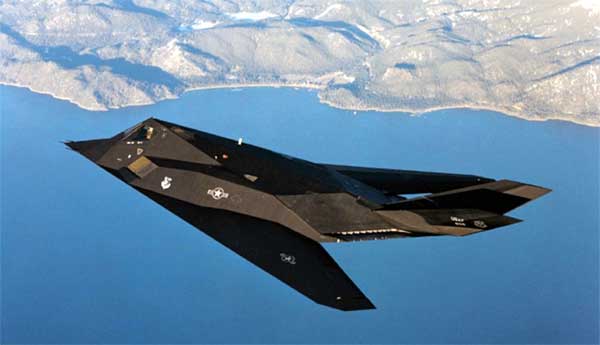
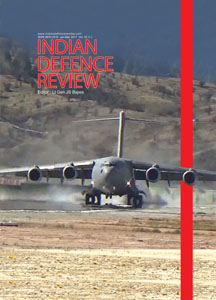
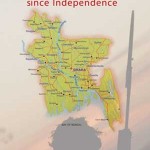
Further to my post a word is warranted to clarify the radar cross section (RCS) to the uninitiated technologically. Even if for the sake of argument one assumes that RCS for a platform can be reduced to the ideal case of zero by whatever means, this does not imply that the platform in the battle field (fighter-interceptor) is undetectable, or better said vulnerable, since the RWR (Radar Warning Receiver) carried on AWACS or ground station does not operate on the basis of RCS in contrast to Radar Receiver. Hence the military strategy for air operations is based on suppressing the enemy defence capability in the case of hostility breaking out. And there enters the crucial role of the technology of countermeasures – chaff, jamming etc . And that mastery of countermeasure failed dismally for the Israelis in the Yom Kippur war since the West lacked behind the Soviet technology passed on to the Egyptians in that war. I am afraid the author has missed this vital point in technology.
Once again this is an article full of technical jargon, whether it will make any sense to even someone with high expertise in military technology for aerospace is hard to see. The subject matter of “stealth” which the author focuses on is cursorily dealt with, and I understand that “stealth” is highly valuable commodity for salesmanship to the military air force personnel since it is not possible for them to grasp fully the implications of state of the art technology.Take for instance reference to Infrared (IR) technology. A fighter pilot cannot switch off the engine of the aircraft he is flying. Hence there is always the IR signature present in the battle field environment and the consequence of stealth in this regard is not much of use. The only rescue in such a situation is falling back on countermeasures, such as IR flares. Also on the radar side, reduction of cross section by redesigning the airframe carries penalties with it since the performance of the platform is compromised from the point of view of the weapon system it is supposed to carry and deliver.